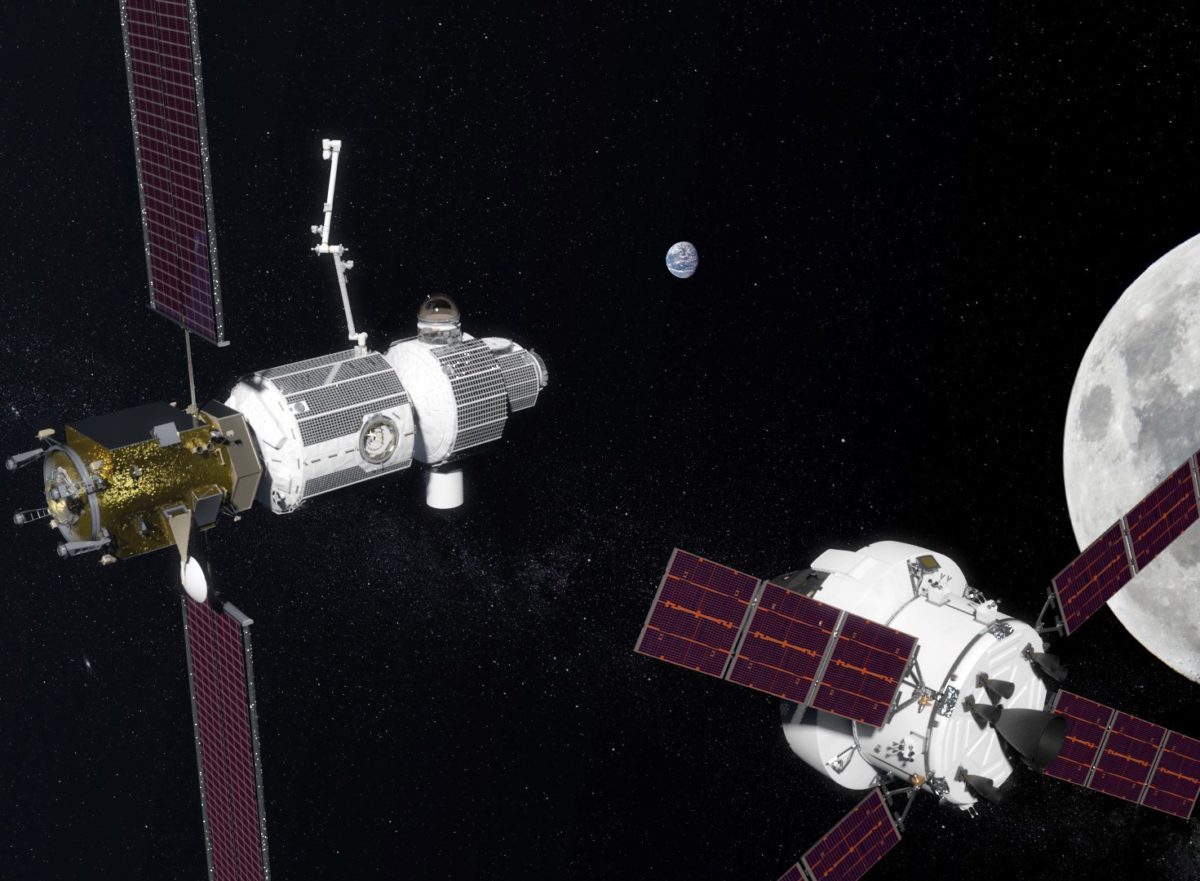Anatoly Zak • Jun 08, 2017
Space station partners weigh in on NASA’s Deep Space Gateway plans
NASA’s International Space Station partners met last month in Montreal, Canada, to review updated plans for an ambitious outpost in lunar orbit that could become the humanity’s gateway to Mars.
At a NASA advisory council meeting in March, agency officials revealed new details and timelines for a Deep Space Gateway and accompanying transport ship. Those plans, which were drafted by the ISS program’s Multilateral Coordination Board, or MCB, have thrown a monkey wrench into years-long planning efforts by NASA’s international partners.

The Deep Space Gateway is still in the planning phase, and did not receive explicit funding in NASA’s latest budget request. But the updated March outline retailored the flight manifest of the Orion spacecraft and giant Space Launch System rocket, with a goal of assembling the first phase of the gateway in a shorter period of time than in previously proposed scenarios. As a result, it could be possible to send astronauts toward Mars on a shakedown cruise in the proposed Deep Space Transport in the early 2030s. (Some industry insiders suggested NASA accelerated its Mars plans thanks to positive signals from the Trump administration, despite the strategy itself having Obama-era origins.)
For example, under the new scenario, the first piece of the cis-lunar station—the Power and Propulsion Bus, or PPB—would hitchhike to lunar space with the second Orion mission, Exploration Mission 2, as early as 2022. That would be a year earlier than previously plans, though this launch date will be very hard to meet.
Even more importantly, the completed cislunar station could now host the Deep Space Transport as early as 2027, a couple of years ahead of the old schedule. Before its venture to Mars, the transport would make one—or possibly two—crewed test lights in the lunar neighborhood.
However, the accelerated plan came with some behind-the-scenes controversy. First of all, the new architecture featured only one habitation module, to be launched during Orion’s Exploration Mission 3, instead of two similar modules requiring two SLS launches.
International experts expressed doubts that the volume and other life-support capabilities of a single habitat would be adequate for long-duration expeditions. Even with the two-habitat design, planners were already struggling how to store and dispose of the trash that would accumulate, sources said. The loss of the second habitat was especially upsetting for the Japanese delegation, which eyed the module as a test bed for JAXA’s next-generation life support system. The second habitat module could still be revived as a contribution from NASA’s partners.
To address the problem of limited space, engineers began looking at the possibility of making the single can-shaped habitat module longer, fatter or even both. The size of the module is constrained not only by lifting capabilities of SLS, but also by the available volume inside the rocket’s payload fairing.
In their endless quest to save every pound of payload mass, planners originally “forgot” to give the habitat any windows. Now, realizing the scientific, humanistic and sociological importance of that ancient architectural detail, engineers are scrambling to find the way to incorporate at least small portholes with only a minimum mass penalty. The most popular solution, adding a 360-degree portable watchtower resembling the ISS cupola, takes away one preciously needed docking port. As a result, the exact location and design of the window remains a matter of debate—despite recent Deep Space Gateway showing the glass cupola.
In another new development, engineers are drafting a potential 10-ton cargo and tanker spacecraft to deliver pieces of hardware for the station’s exterior, while also carrying fuel to increase the outpost’s lifespan and maneuvering capabilities. Besides traditional hypergolic propellant similar to that delivered to the ISS today by Russian Progress cargo ships, the new tanker might carry liquefied xenon to feed the station’s innovative ion thrusters. Taking a page from the ISS history, the development and operation of the cargo system could be outsourced to private contractors.
In the meantime, Europe is advancing its plans for a large, robotic Moon lander closely associated with the Deep Space Gateway. The lander is expected to collect lunar soil samples and shoot them back to the station, where they can be delivered back to Earth by astronauts. The lander might also include a rover that would embark on what might become a record-breaking journey across the lunar surface, toward Amundsen crater near the Moon’s south pole.
The European effort, known by some as HLEPP, the Human Lunar Exploration Precursor Program, would pave the way for a larger crewed lander that could be based at the Deep Space Gateway. At the international partner meeting, engineers confirmed the capability of the station to support human expeditions to the surface. However, the station apparently would not be able to descend to low-lunar orbit, which would be the most convenient option for staging lunar landings.
The challenge of accessing the lunar surface from the proposed station, along with other financial and political issues, has led to diminishing Russian participation in the project, with only one observer from the Korolyov-based TsNIIMash research institute present at the latest summit. However, Russian engineers still hold hope they would be able to provide an airlock for the outpost and send their next-generation crew vehicle on periodic visits in the second half of the 2020s, Russian space industry sources said.
For more historic and technical background on the cis-lunar station project, click here.
Anatoly Zak is the publisher of RussianSpaceWeb.com and the author of Russia in Space: the Past Explained, the Future Explored.
Support our core enterprises
Your support powers our mission to explore worlds, find life, and defend Earth. You make all the difference when you make a gift. Give today!
Donate

 Explore Worlds
Explore Worlds Find Life
Find Life Defend Earth
Defend Earth

